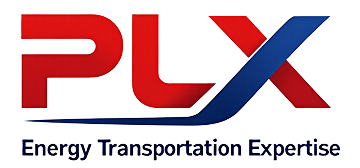Pipeline tariffs, regulated by the Federal Energy Regulatory Commission (FERC), are undergoing key changes—reshaping how oil, natural gas, and refined products are transported across interstate systems. As the energy sector adapts to shifting demand, infrastructure investments, and policy changes, understanding these evolving regulations is critical for shippers, midstream operators, and producers alike.
What Are FERC-Regulated Pipeline Tariffs?
FERC oversees interstate pipeline transportation of oil and natural gas, ensuring that tariffs (the rates and terms for transporting commodities) are just, reasonable, and non-discriminatory. These tariffs cover costs associated with transportation, maintenance, and capital investment, and they are published in public filings.
What’s Changing in 2025 and Beyond?
As of 2025, several updates are influencing tariff structures:
- Indexing Methodology Adjustments
FERC periodically reviews its indexing formula, which adjusts base rates to reflect changes in pipeline industry costs. Recent updates account for inflation, capital recovery, and efficiency incentives—potentially leading to higher or lower allowable rate changes. - Emphasis on Cost Transparency
Shippers are demanding greater visibility into cost-of-service calculations. FERC now emphasizes detailed cost disclosures in tariff filings, which could impact negotiations and rate-setting, especially for long-haul or legacy pipelines. - Climate and ESG Considerations
Regulatory pressure is increasing around emissions disclosure and environmental compliance costs. Pipelines may begin factoring these costs into tariffs, particularly for assets crossing multiple jurisdictions or sensitive ecological zones. - Pipeline Capacity Allocation Reforms
FERC is reviewing how capacity is allocated in constrained systems. This could affect priority access, open seasons, and secondary market trading—ultimately influencing the economics of supply contracts and transport commitments.
Implications for Industry Players
For producers, refiners, and marketers, these changes require close attention. Tariff fluctuations can directly impact netback pricing, project feasibility, and long-term logistics planning. Additionally, evolving rules may create opportunities for negotiation or challenge of existing tariffs under certain conditions.
Strategies to Stay Ahead
- Monitor Tariff Filings – Regularly review FERC dockets and filings to stay informed about rate changes or new proposals.
- Engage in Regulatory Processes – Participate in public comment periods or hearings if changes affect your business.
- Evaluate Multimodal Alternatives – In some cases, shifting volumes to rail or barge may offer short-term cost advantages.
- Audit Your Rates – Ensure current tariffs and surcharges align with contract terms and actual usage.
Conclusion
The evolution of FERC pipeline tariff regulations reflects the dynamic nature of the energy sector. Staying proactive, informed, and adaptable is key for companies looking to protect margins and ensure reliable, cost-efficient transportation.


